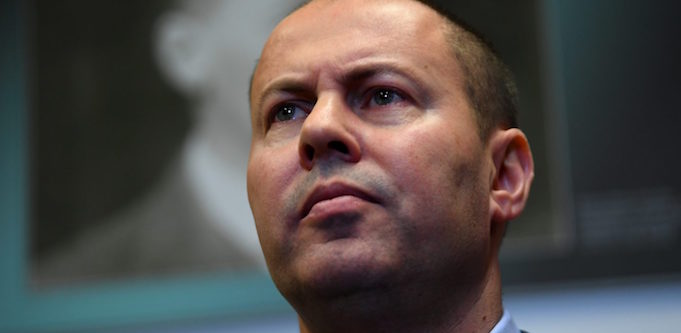
Treasurer Josh Frydenberg. Source: AAP/James Ross.
As Australians await a second stimulus package, the federal government and the Reserve Bank of Australia have pumped $105 billion into banks and lenders, to try to get credit to struggling small businesses.
The RBA announced yesterday it has issued a $90 billion term funding facility for authorised deposit-taking institutions, with a specific directive that they should use it to issue loans to small and medium businesses.
Banks can borrow up to 3% of their existing outstanding credit, plus additional funding if they can prove they have increased lending to SMEs.
For every dollar lent to SMEs, they will get $5 in additional funding themselves.
“At some point, the virus will be contained and the Australian economy will recover. In the interim, a priority for the Reserve Bank is to support jobs, incomes and businesses, so that when the health crisis recedes, the country is well placed to recover strongly,” the RBA said in a statement.
At the same time, the government has issued a $15 billion funding facility for non-banks lenders, which Treasurer Josh Frydenberg said “ensures that some of the non-bank lenders are getting support to provide extra finance to the SME sector”.
This measure has been welcomed by the fintech community.
In a statement, Greg Moshal, chief executive of alternative lender Prospa said fintechs are “well placed to distribute government funding quickly without any long application processes or excess documentation”.
“A fast response is exactly what small business owners need right now,” he added.
But, with Frydenberg now suggesting a recession will be difficult to avoid, how much will additional debt funding really mean to small businesses? And crucially, how do they get their hands on it?
Money in your pocket?
Speaking to SmartCompany, Jason Andrew, chartered accountant and founder of operational finance firm SBO, said this is an “unprecedented” measure from the government and the Reserve Bank.
“They’ve dropped it to basically give liquidity to banks to give out loans to small business owners, to stimulate economic growth. That’s the intention,” he explains.
But, it doesn’t necessarily mean cash in the pockets of business owners.
While details aren’t entirely clear just yet, it will depend to an extent on who small businesses bank with.
“Big four banks will have different risk profiles,” Andrew says.
“Some will probably be a bit looser, or a bit different, with who they might lend to.”
At the same time, banks have been known to be hesitant on lending to SMEs they believe could go into liquidation, or go bankrupt. In the current COVID-19 environment, many businesses are struggling more than ever.
While this is an incentive to lend to them, it doesn’t offer any guarantees.
“There’s a lot of cash here, to dish out to small business customers,” Andrews notes.
“There may be a default risk with some customers … but cheap debt will hopefully reduce that risk to pass it on.”
Finally, just because a business has easier access to capital, that doesn’t mean it’s automatically going to survive the coronavirus downturn.
We don’t know how long the crisis is going to go on for. And for businesses suffering from a loss of sales, or those that aren’t able to trade, a loan will merely buy them some time.
“If you’ve got a poor-performing business which is just incurring losses, having more access to credit or debt will not necessarily fix the underlying economics of the business,” Andrew explains.
“It might delay the problem, because you’ve got debt to fund those losses in the short term. But eventually, that debt will run out.”
Ultimately, Andrew sees the funding as “a very short-term measure”, he says.
“I don’t think it’s going to structurally help businesses being impacted by COVID-19 or a recession,” he says.
The thing that could really help SME owners is cash payments, rather than a loan. The grants of up to $25,000 announced last week was a good start, he says.
But it was effectively a rebate.
“What people need is money actually in their bank account to spend — to employ people, to buy goods, and to really kickstart the economy again,” he explains.
“That’s a far more effective way of helping businesses weather through this economic uncertainty.”


COMMENTS
SmartCompany is committed to hosting lively discussions. Help us keep the conversation useful, interesting and welcoming. We aim to publish comments quickly in the interest of promoting robust conversation, but we’re a small team and we deploy filters to protect against legal risk. Occasionally your comment may be held up while it is being reviewed, but we’re working as fast as we can to keep the conversation rolling.
The SmartCompany comment section is members-only content. Please subscribe to leave a comment.
The SmartCompany comment section is members-only content. Please login to leave a comment.